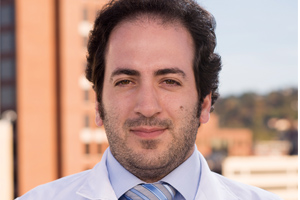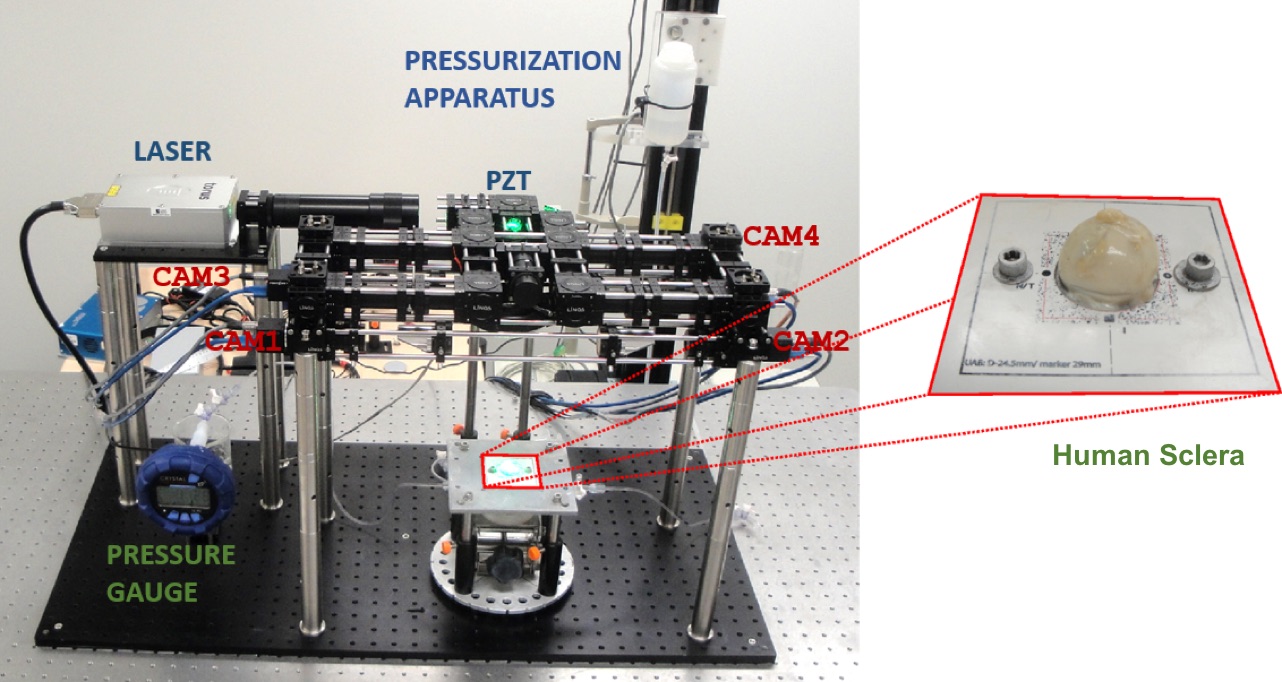 Massimo Fazio, PhD, Assistant Professor at the University of Alabama at Birmingham Department of Ophthalmology and Visual Sciences, and his colleagues Luigi Bruno, PhD, and Gianfranco Bianco, PhD, developed a dynamic Electronic Speckle Pattern Interferometer (d-ESPI) for measuring time-dependent, three-dimensional surface displacements of ocular tissue with nanometric precision.
Massimo Fazio, PhD, Assistant Professor at the University of Alabama at Birmingham Department of Ophthalmology and Visual Sciences, and his colleagues Luigi Bruno, PhD, and Gianfranco Bianco, PhD, developed a dynamic Electronic Speckle Pattern Interferometer (d-ESPI) for measuring time-dependent, three-dimensional surface displacements of ocular tissue with nanometric precision.
The biomechanical properties of the eye are believed to be significant risk factors for many ocular diseases. For example, intraocular pressure (IOP) is thought to be the most relevant risk factor for the onset and development of permanent visual damage in a variety of eye diseases including glaucoma and myopia. Numerous studies have supported these results; however, the reliability of these studies is strongly dependent on the quality and reliability of the data scientists can collect in dedicated lab experiments. For this reason, a precise quantification of the biomechanics of the eye is crucial for understanding the causing factors of several blinding diseases.
 Picture of the d-ESPI optical and testing setup: the specimen (human sclera) is positioned under the interferometer mounted on a metal plate, which is fixed to a rotating platform. The mounted human sclera and the metal plate are highlighted in the red callout box. Custom marks are imprinted on the metal plate to facilitate the calibration and matching of the four cameras.Fazio and his colleagues formed a collaboration between the University of Alabama at Birmingham's Department of Ophthalmology and Visual Sciences and the Department of Mechanical Engineering of the University of Calabria (Italy). Their aim was to develop mechanical testing devices and testing that would provide a precise characterization of the ocular tissue biomechanics. Commercial laser devices could not carry out the tests needed, and produced poor results. A better device was needed.
Picture of the d-ESPI optical and testing setup: the specimen (human sclera) is positioned under the interferometer mounted on a metal plate, which is fixed to a rotating platform. The mounted human sclera and the metal plate are highlighted in the red callout box. Custom marks are imprinted on the metal plate to facilitate the calibration and matching of the four cameras.Fazio and his colleagues formed a collaboration between the University of Alabama at Birmingham's Department of Ophthalmology and Visual Sciences and the Department of Mechanical Engineering of the University of Calabria (Italy). Their aim was to develop mechanical testing devices and testing that would provide a precise characterization of the ocular tissue biomechanics. Commercial laser devices could not carry out the tests needed, and produced poor results. A better device was needed.
Fazio and his colleagues set out to overcome the limitations of the current technology and designed and built a customized laser speckle interferometer, d-ESPI. This customized interferometer can measure the shape and the full displacement field of an eye with an accuracy of few nanometers and at an acquisition rate as high as 250Hz.
The d-ESPI is currently used on several NIH R01-funded projects to investigate the association between ocular tissue biomechanics and the development of ocular diseases. These works have the potential to show the correlations between mechanical stress/strain of the eye and ocular diseases in a way that was never before studied.
The development of the d-ESPI was supported by the EyeSight Foundation of Alabama and Research to Prevent Blindness, Inc.
The full article can be found here.